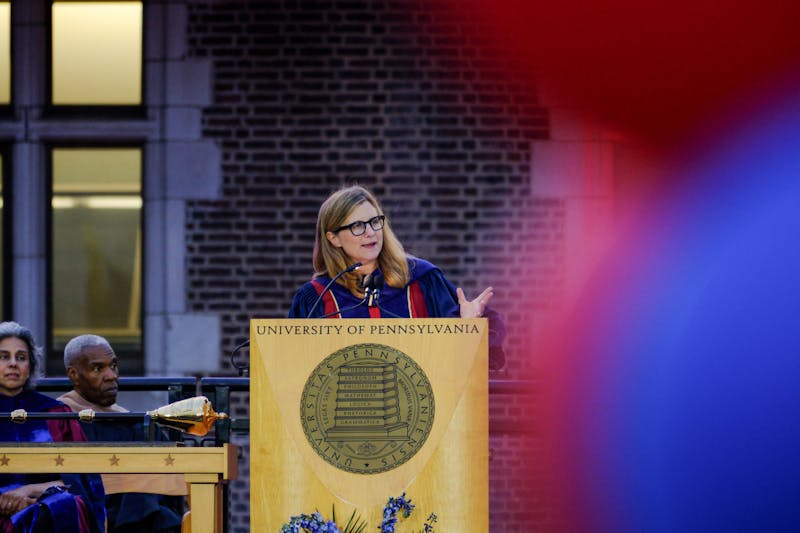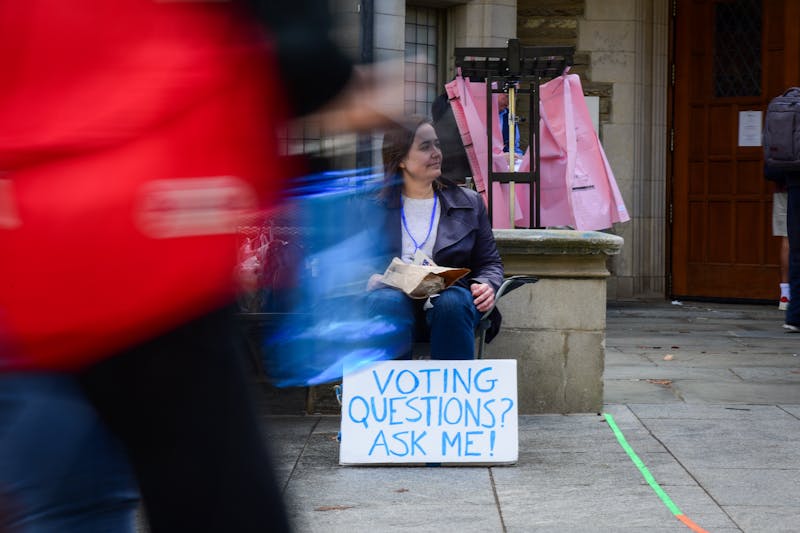
The conversation on diversity is ongoing within each of Penn’s 12 schools.
Since the column “Guess Who’s (Not) Coming to Dinner” was published in The Daily Pennsylvanian last week, the issue of diversity in hiring administrators became a hot topic. Outside of upper-level administration, however, the schools have individually been working on diversifying their faculty hires.
During the 2011-2012 school year, the University released its action plan for Faculty Diversity and Excellence. The plan — which outlined the University’s goals and strategies for recruiting diverse faculty and leadership — pledged $100 million to the cause over five years. Since then, each of Penn’s 12 schools have drafted their own diversity action plans in line with the University’s.
The timeline for recruiting and hiring new faculty varies from school to school. Most schools finalized their plans between May and August of last year. And while some are still in the search process, other schools have already made hires.
The Annenberg School, for example, which has a standing faculty of 20, has already hired two faculty members under the new plan—Dolores Albarracin and Guobin Yang, who is a joint hire with the Sociology Department.
The Graduate School of Education is in the process of recruiting a black professor as a target of opportunity hire — a hire that is recommended and voted on by faculty members directly as opposed to a regular search process.
The School of Arts and Sciences’ hiring process, however, began in fall 2012 and will extend into the spring semester. All hires are usually finalized by the beginning of summer 2013, although not all of the departments follow this schedule.
A plan’s impact
The schools agree that the biggest impact their plans have had is in how they approach hiring new faculty members.
“One of the biggest immediate impacts of the diversity initiatives has been to make changes in the search process itself — for example, to increase faculty awareness of unconscious bias and the importance of broadening the applicant pools, as well as increasing oversight of the process,” said Sherrill Adams, director of Faculty Advancement and Diversity for the School of Dental Medicine.
J. Larry Jameson, dean of the Perelman School of Medicine, said there is a strong “emphasis on leadership, engagement of the faculty broadly and a very strong message that our success in the future is explicitly tied to having a more diverse student body and faculty group” in the school’s diversity action plan.
Nancy Tkacs, the assistant dean for Diversity and Cultural Affairs at the School of Nursing, and Jessie Harper, the assistant dean of Faculty Affairs and Diversity at the GSE, agree that while some of their approaches are new, the creation of a new plan helped them to “articulate” their ideas.
Tkacs noted that the plans were based off of the “strategic goals of the schools that had been in place before we were required to produce a diversity action plan.”
For some schools, one of the largest changes was the creation of new positions and committees for the purpose of working towards diversity. Harper’s position, for example, was created this year.
Additionally, Dean of SAS Rebecca Bushnell said in an email, “The most important new initiative that came from the plan has been the appointment of two diversity search advisers, who have been working very closely with departments and search committees.”
Defining diversity
Many of the schools chose a broad definition of diversity, following the example set by the University.
Penn’s overall diversity action plan states that “a great university — true to its name —must encompass a universe of backgrounds and experiences, ideas and ideologies, theories and perspectives.”
The definition that many of the individual schools reference is, “the diversity of our university must reflect the diversity of the world around it — and the diversity of the world that we want our students to lead.”
For example, Annenberg’s action plan says that it is dedicated to the principles of the University.
GSE on the other hand, provided their own definition, “Diversity at GSE is defined as the appreciation and development of a climate of scholars, administrators and students who possess diverse knowledge, life experiences, and research directions that service and learn from diverse communities in Philadelphia, the nation, and the world with a unique concern for social justice.”
However, such broad definitions can lead to confusion and disagreement about who the University should be seeking out. Sociology professor Camille Charles made the point in a DP article last week. “There isn’t a general agreement about how we define diversity, and I think it behooves us to think about multiple definitions because otherwise it’s like we’re having separate conversations. It’s difficult to make progress if you’re talking across purposes.”
Other schools, like the School of Veterinary Medicine, chose to define diversity more specifically, including race, gender, sexual orientation, nationality, age along with many other factors in their definition.
Harper said, “I think that it’s important that the conversation be ongoing,” regarding the definition of diversity, emphasizing that it is not fixed for GSE.
Wharton, for example, worked this year with the Wharton Alliance, a student LGBT pre-professional group on campus, to include gender identity and sexual orientation into their working definition of diversity.
Pipeline to diversity
A major component of several of the diversity action plans is a plan for improving upon the schools’ pipeline programs. These programs encourage high school, college and graduate students of underrepresented minorities to further pursue higher education and ideally becoming a Penn professor down the road.
The School of Engineering and Applied Sciences’ action plan reads, “It is important to increase the participation of women and underrepresented minorities in the field of engineering,” focusing its efforts on college, graduate, and postdoctoral students in particular.
For the Medical School, an average of 25-30 percent of students from Penn go on to the residency program here, according to Jameson.
“At that point we know them very deeply, and it makes great sense for us to consider them early and identify them for various faculty tracks,” he said.
The Nursing School, meanwhile is focusing on developing a pipeline program targeting high school and undergraduate students. They plan on “encouraging more young people, diverse young people and men to go into nursing to begin with and then building on that,” Tkacs said.
Other schools on the other hand do not a pipeline program set up. At the School of Social Policy & Practice, prospective faculty have to “earn their stripes” in the field of social work before being hired, said the Dean of SP2, Richard Gelles.
Despite the new hiring practices and programs implemented in the past year, the deans and assistant deans of each of the 12 schools admit that there is always progress to be made.
The Daily Pennsylvanian is an independent, student-run newspaper. Please consider making a donation to support the coverage that shapes the University. Your generosity ensures a future of strong journalism at Penn.
DonatePlease note All comments are eligible for publication in The Daily Pennsylvanian.







